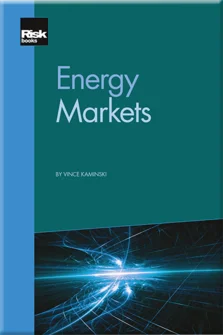Energy Markets: The Instruments
Energy Markets: The Instruments
Energy Markets: Introduction
Energy Trading and Marketing: The Macro View
Energy Trading: The Organisation
Weather Information in Energy Trading
Energy Markets: The Instruments
Energy Markets: Structured Transactions
Energy Markets: Exchanges
Energy Markets: Market Participants and Regulatory Developments
Natural Gas: Upstream
Non-conventional Natural Gas
Natural Gas Transportation and Storage
US Natural Gas Markets
International Natural Gas Markets
Oil Markets: Properties, Production and Reserves
Non-Conventional Oil
Oil Processing
Oil Transportation and Storage
Oil Pricing
Transactions in the Oil Markets
Electricity: The Basics
Power Generation
Transmission, Loads and Power Pools
Analytical Tools
Electricity Markets Transactions
Manipulation and Gaming of Energy Markets
Emission Markets
Coal Markets
Conclusions
This chapter will provide a review of the different instruments that can be used by energy markets participants to market or trade different energy commodities, hedge their exposures related to energy prices, or to make directional bets on market directions. The objective is to concentrate on common features shared by the various instruments, irrespective of differences with respect to underlying physical commodities. The review of such instruments is necessary in order to follow the discussions of different markets contained in subsequent chapters. The instruments covered here include forwards and futures, swaps and options. More complex types of transactions will be covered in the next chapter.
Understanding derivative instruments is a critical skill that any participant in the energy markets requires. Energy-related transactions are saturated with options: any contractual flexibility with respect to delivery timing and location, quality of the underlying commodity, volume, ability to discontinue or restart production, can be translated into some type of a derivative. These derivatives tend to interact and overlap, and are contingent on each other and on non
Copyright Infopro Digital Limited. All rights reserved.
As outlined in our terms and conditions, https://www.infopro-digital.com/terms-and-conditions/subscriptions/ (point 2.4), printing is limited to a single copy.
If you would like to purchase additional rights please email info@risk.net
Copyright Infopro Digital Limited. All rights reserved.
You may share this content using our article tools. As outlined in our terms and conditions, https://www.infopro-digital.com/terms-and-conditions/subscriptions/ (clause 2.4), an Authorised User may only make one copy of the materials for their own personal use. You must also comply with the restrictions in clause 2.5.
If you would like to purchase additional rights please email info@risk.net











